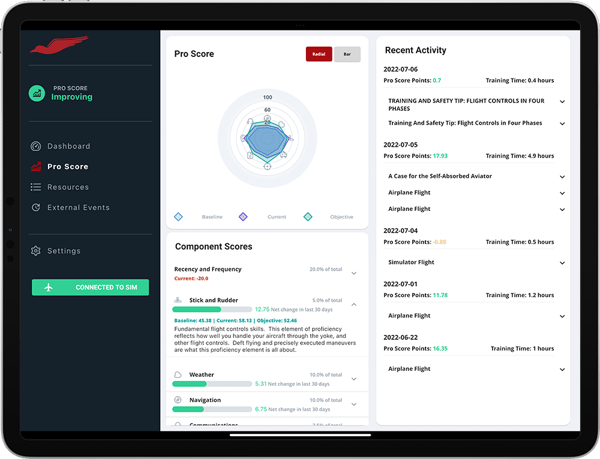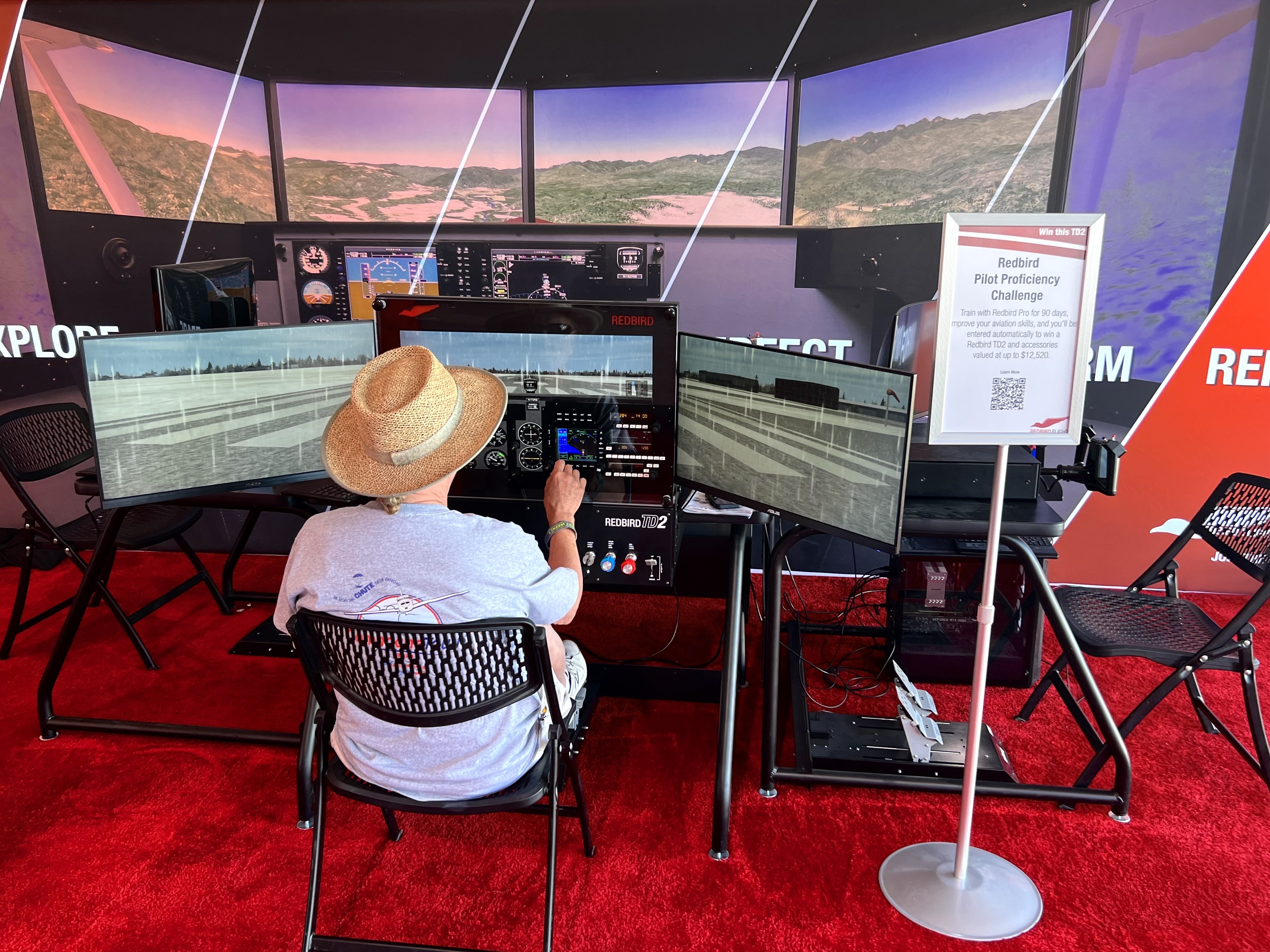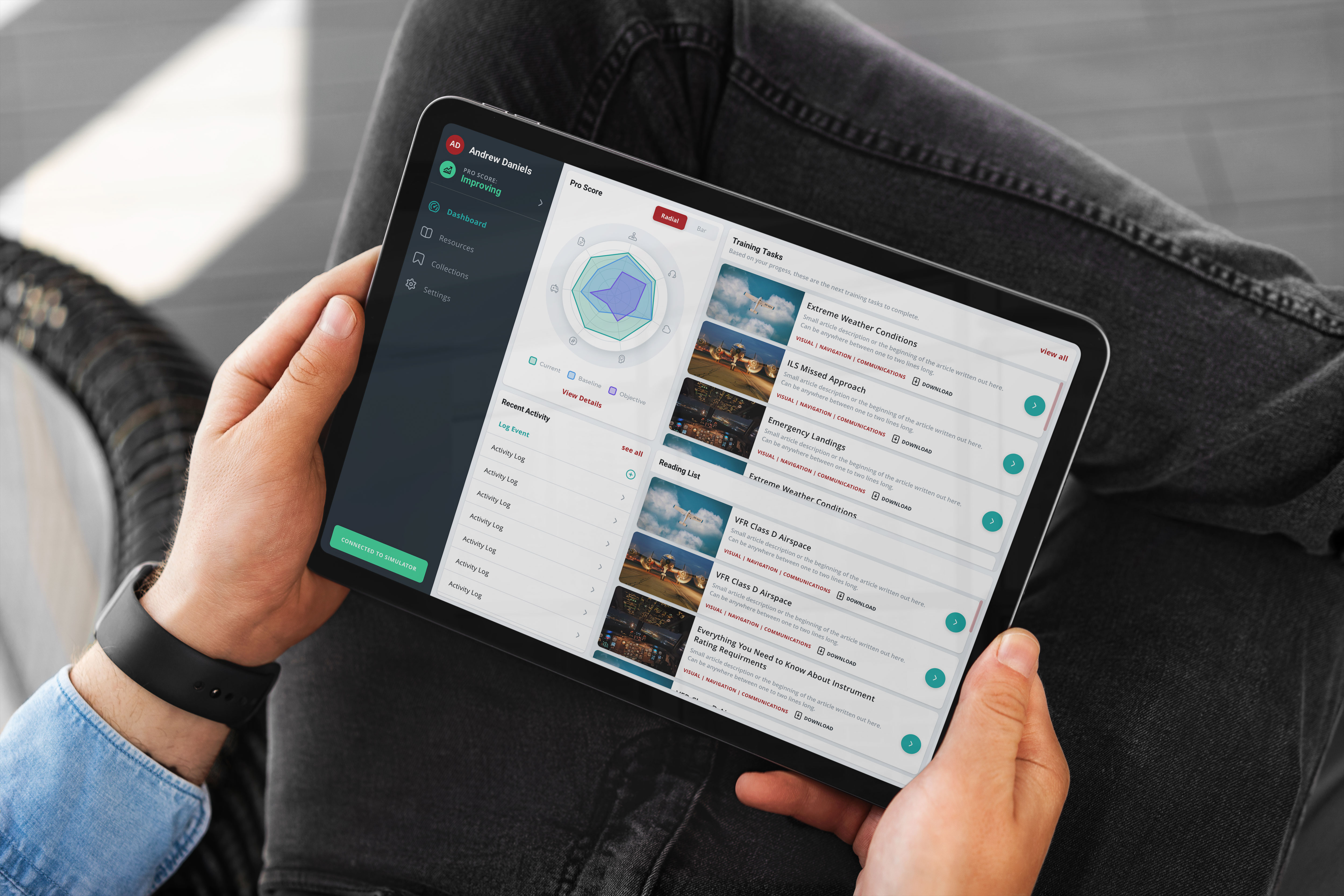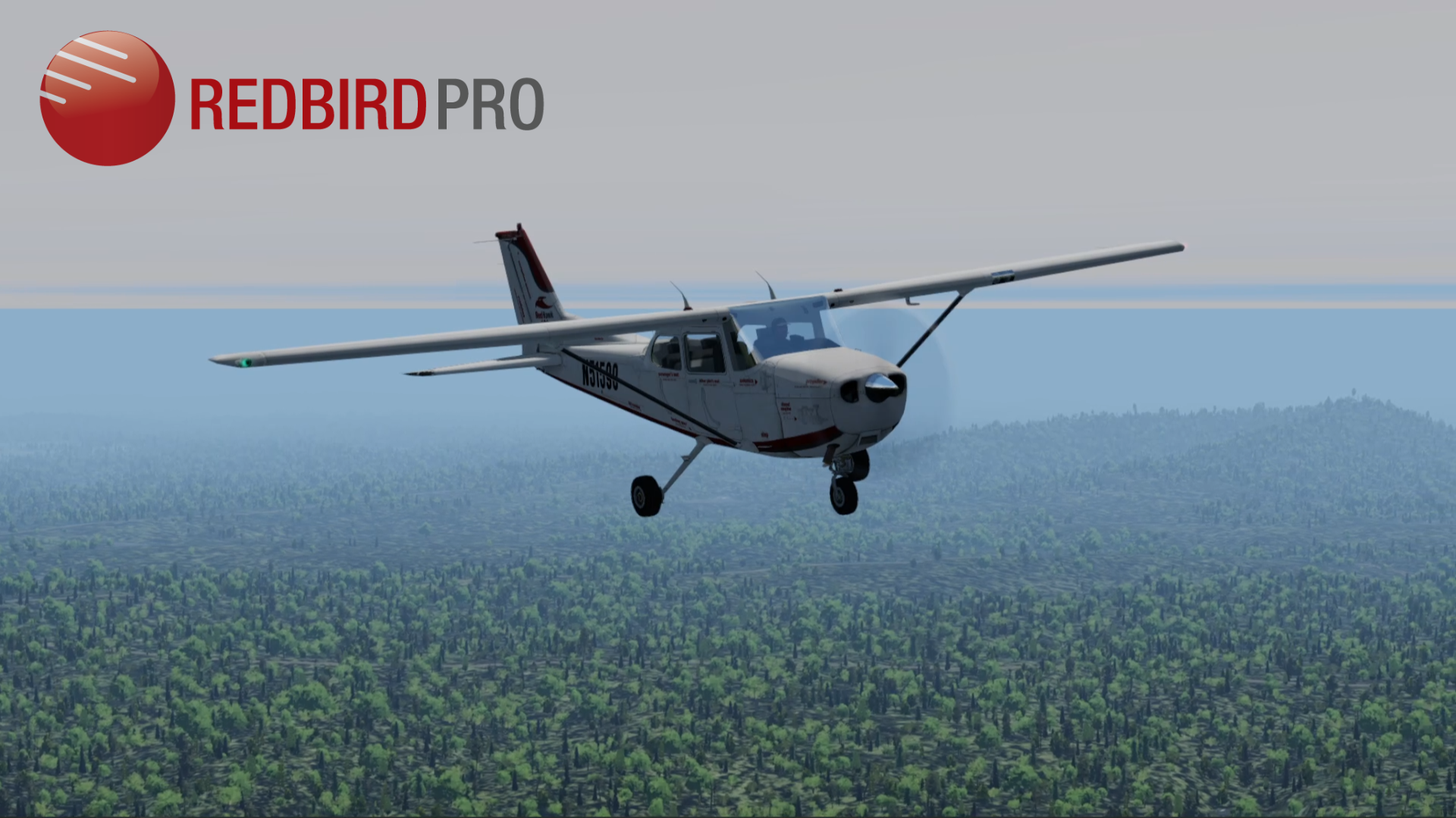How To Win Our Pilot Proficiency Challenge
During EAA AirVenture Oshkosh 2022, we launched the Redbird Pilot Proficiency Challenge to motivate pilots to kick start the next phase of their proficiency training. The premise is simple: Participants train with Redbird Pro for 90 days, use the app to enhance their knowledge and skills, and the three pilots who improve the most take home some pretty amazing prizes.
Truthfully, everyone who works to become a better pilot for the duration of the challenge is a winner. Creating a population of motivated and highly skilled pilots is the main objective of the challenge — and Redbird Pro. If pilots use the app in any capacity for 90 days, their score — and their proficiency — will continue to improve.
Taking home first prize, on the other hand, requires a slightly deeper understanding of the app and the tools available within it. If you are among the pilots aiming to win the Redbird TD2 and the training accessories that accompany a finish atop the leaderboard, here is a primer on how to use all the features in Redbird Pro to your advantage.
Understand the scoring
Measuring improvement is a challenge in and of itself, but that is precisely what we designed Redbird Pro to accomplish. Your Pro Score is at the core of everything you do in the app. It tracks how often you train, which training tasks you complete, and how well you perform in those tasks.
Your Pro Score factors in nine components critical to a safe flight: recency and frequency of training, aeronautical decision making, instrument approach procedures (Instrument Pilot subscription only), weather, navigation, emergency operations, communications, regulations, and stick and rudder skills. Each component makes up a percentage of your total Pro Score. When you complete a training task in Redbird Pro, the app evaluates changes to your knowledge and skills and adjusts your Pro Score accordingly.
Breakdown of the component scores
- Recency and Frequency: 20%
The recency and frequency of your training are critical factors to proficiency. While you cannot work on this component score directly, every training task you complete will maintain or improve it. The inverse also applies. As you take time away from your training, your recency and frequency score will decrease gradually. Basically, use it or lose it. - Aeronautical Decision Making: 17.5%
All that maneuvers training is for naught if you do not make sound decisions on the flight deck. Are you assessing potential risks that you might encounter during a flight? How are you reacting to unexpected challenges? As you train, this all-important component of proficiency keeps a watchful eye on your judgment. - Instrument Approach Procedures: 12.5%
We only score this component for Instrument Pilot subscribers, for whom it's one of the most important areas of proficiency. The IAP component measures everything from your average CDI deflection on approach to DA discipline and correct hold entry procedures. - Weather: 10%
This component looks at your ability to translate weather products, identify weather on the ground and during a flight, and make choices based on that information (which affects your ADM score, too). Weather briefing is an essential skill that can determine the options you have at your disposal during a flight. - Navigation: 10%
The navigation component reflects your ability to navigate using the many methods VFR and IFR pilots must know and be able to use. Preflight planning and knowledge of navigation systems are necessary to achieve and maintain high proficiency numbers here. - Emergency Operations: 10%
Are you prepared for a worst-case scenario? What about a minor emergency that sneaks up on you? This component measures your ability to identify various emergencies and manage them to a safe conclusion. - Communications: 7.5%
Do you listen to traffic and communicate effectively with ATC? Your communications score will tell you (and see if you're listening). Receiving and complying with ATC communications is as important as being able to read a sectional, not to mention being sure you have tuned in the correct VOR or localizer frequency. - Regulations: 7.5%
According to 14 CFR Parts 1, 61, 91, and many others, you need to be familiar with and follow Federal Aviation Regulations. This component will let you know if you need to brush up on them. - Stick and Rudder: 5%
This component reflects how well you handle your aircraft through the yoke and other flight controls. Your stick and rudder skills may atrophy slower than others, but atrophy they will if you do not allocate training time to them. To increase your score in this component, you must demonstrate that you can skillfully execute the maneuvers you would encounter in one of your flights.

Work on your weakest areas
Despite the weight allotted to each component score, the best way to improve your overall Pro Score is to focus on the areas you overlook or struggle to improve in your training. These areas of need present the greatest opportunity for growth as a pilot and, therefore, your best chance of observing an immediate and meaningful uptick in your Pro Score.
The training plan feature in the app makes it easy for you to address these areas. It includes a list of training tasks — scenarios, skill flights, articles, and quizzes — which the app suggests to help you improve your lowest component scores.
If you are new to Redbird Pro, we recommend three simple tasks to help the app optimize your training plan.
- Fill out your pilot profile in the settings section of the app
- Take the VFR or IFR baseline written evaluation
- Complete the VFR or IFR baseline flight
This information helps Redbird Pro better understand your goals, experience, and level of knowledge and performance across all the components of proficiency. In turn, the app can create a training plan that suits your needs more effectively.

Debrief scenarios and skill flights
Scenarios and skill flights put your knowledge and skills to the test — and the best way to improve your score on a test is to review and debrief your performance.
After you fly a scenario in Redbird Pro, the app will prompt you to debrief your component scores for the scenario and watch a video where an expert CFI reviews the challenges and keys to success. If you are not satisfied with your performance, we recommend you try the scenario again after you debrief it.
If you continue to struggle with a specific area of the flight, you can head over to the resources section of the app to find additional training tasks that help you improve it. We tag every training task in Redbird Pro with the proficiency component(s) it addresses to make it easy for you to dive into content that brings you back up to speed in your weakest areas.
Plan your training wisely
One of the benefits of Redbird Pro is that it allows you to train on the go. Traditionally, we think of training time as rigid 30-minute to hour-long blocks that we need to add to our calendar. Some scenarios in Redbird Pro can require anywhere from 20 minutes to an hour and may warrant this type of premeditated scheduling.
However, the articles and quizzes in the app take no more than a few minutes to read and complete. Using your mobile device, you can easily work these training tasks into your day — whether first thing in the morning, during your lunch break, or before you go to sleep. Even when you don't have time to fly scenarios, taking a few minutes out of a busy day to read an article still makes you a more knowledgeable pilot.
Remember, the recency and frequency component accounts for the largest percentage of your overall Pro Score. Consistency is one of the most important factors in achieving and maintaining proficiency — and keeping you on track to win the Redbird Pilot Proficiency Challenge.
Share this
You May Also Like
These Related Articles
-1%20(1).png)
Inside the October 2022 Redbird Pro Scenarios

Introducing Redbird Pro
